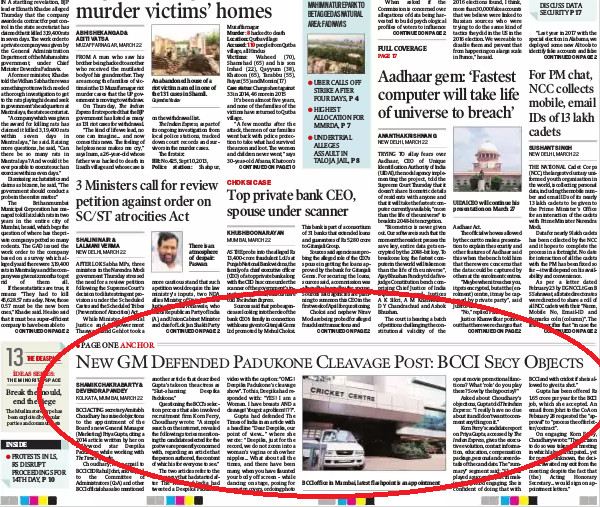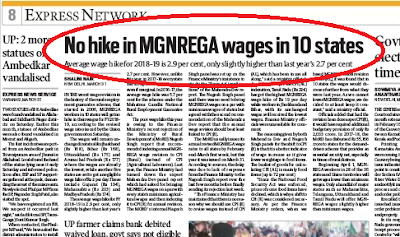Every morning after getting ready, I open up the website of national newspaper and go through its headlines. I have been doing this for quite a while. Most of the times I start with main page, read headlines and if anything interests, would read the full news. Recently, I have been reading about role of media in the democracy. It is astonishing how media plays so important role in shaping beliefs of middle class (Poor can't buy newspapers or they do not as they already feel alienated from system) Noam Chomsky's explanation on how media utilized to spread propaganda in 'Manufacturing Consent' book gave me new way of looking towards media. It made me to rethink about how I should read the newspaper and I have been practicing it for last few weeks. In this blog, I would like to share it. Before we jump into this, I would like to warn that this way is NOT going to help you to crack any exam but will definitely help you to read real news.
The main page of newspaper is supposed to give all major headlines that concerns the reader (customer of product in this case). However, one does observe that a significant space is devoted for utterly useless news. Here a snippet from front page of Indian Express
 |
| The main story of 23rd March (Page one anchor) is about bureaucrat in a privately owned society. |
There are some news which act as just 'fill in' between ads. Those news are another example of distraction from main issue. Why can't newspaper use this space for news which is relevant to daily life of the reader?
 |
| Does this fill in qualified to be called even news? Dainik Bhaskar is 4th largest circulating newspaper in the world! |
In order to find real news, you have to dig-in into last pages of newspaper. Here is an example:
 |
| Doesn't Economic Advisor's comment on future of economy deserve a separate heading and better place than 17th page? |
 |
| Why this is buried on 8th page while the upcoming election in nearby state (this is Mumbai edition) is picked as main story (picture below)? |
 |
Some news items are aimed at justifying government policy. India's rising expenditure on defense (majorly on arms import) receives public support because of manufactured news like below. On the other hand, news about expenditure on health, education, nutrition is treated as not so important.
 |
| Though the heading points out decline with respect to GDP, the same article mentions somewhere in bottom that allocation has actually increased 5.8% compared to last year. |
 |
| Forget about your education, health and unemployment, let us import arms first! |
 |
| People's demands and opinions get place on 19th page. |
I think you must have gotten my point by now. What happens in newspaper, happens in TV news channels and social media also. Those mediums have found to be more effective in spreading propaganda. Perhaps, media is the only industry where customer consumes content without asking any question. In most cases, he has to because there is no other option available! The arrival of internet was supposed to help independent media but it hasn't happened on large scale. This is mainly because of the funding architecture of media. It is heavily dependent on corporate ads and political parties. In US, the independent media like Democracy Now, Progressive is rising and have sustained for long period. Lets hope same happens in our country too.
Finally, as a reader we have only one option - to read news critically and skeptically. Note that the skepticism is important because all governments lie!. Don't agree? Watch this:
Here Chomsky explains in 2 min. what readers can do:
To know more about how media manufactures public opinion, do read Manufacturing Consent by Noam Chomsky.

No comments:
Post a Comment